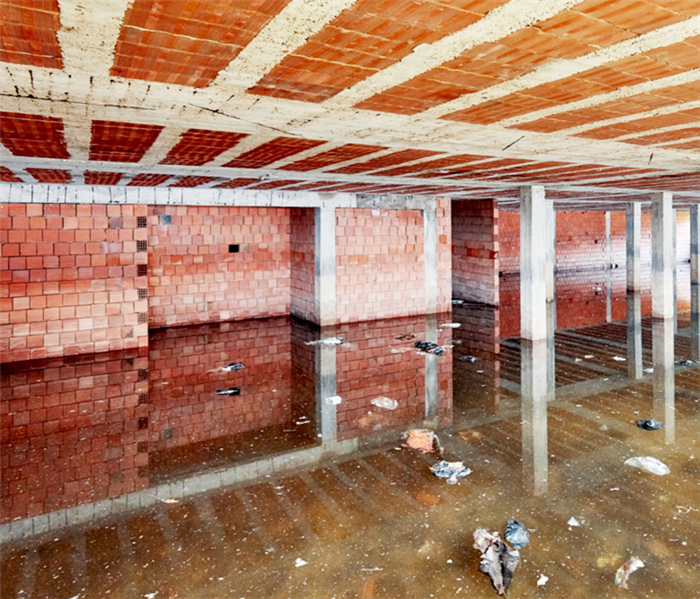How Can I Dry Out My Warehouse After a Flood in Everett?
5/10/2020 (Permalink)
SERVPRO Can Implement Specialized Extraction and Drying Techniques to Remove Moisture from your Warehouse in Everett
One day you might walk into your warehouse to begin work after a thunderstorm struck the area the night before and find a large amount of standing water on your concrete floors. To help you get back to business right away, our SERVPRO team can use a sump pump to remove liquids that are deeper than two inches. We can then use a squeegee to push any other water that is on your warehouse's hard surface floors into a drain or mop it up.
What is the next step after you extract and remove all of the water?
The next step in flood damage restoration in Everett is to set up drying equipment that can remove moisture from your atmosphere and wet building materials and contents. We can place a combination of air movers and dehumidifiers to help speed up the natural drying and evaporation process. Air movers push air in a counterclockwise motion that allows moisture to evaporate from your wet structural components and warehouse inventory. Dehumidifiers then remove water from the air.
How do dehumidifiers work?
- Refrigerant Dehumidifiers: This type of machine contains a cold metal coil that causes condensation when it touches wet air and pulls the moisture out of it while exhausting warm dry air that gets used in the air circulation created by the fans.
- Low Grain Refrigerant (LGR) Dehumidifiers: An LGR works the same way as a refrigerant system, but an LGR cools the air before it hits the evaporator coil.
- Desiccant Dehumidifiers: These machines pull wet air past a rotor with silica gel that attracts H2O molecules.
Which system will work best for my warehouse?
- We use refrigerant dehumidifiers as a first step when humidity levels are high.
- We can then use desiccant dehumidifiers when your structural components, such as your warehouse's concrete floors are still wet.
When a flood devastates your business's warehouse in Cavalero or Machias, call SERVPRO of North Everett / Lake Stevens / Monroes at (360) 243-8313.
Click here for more information about Everett.






 24/7 Emergency Service
24/7 Emergency Service
